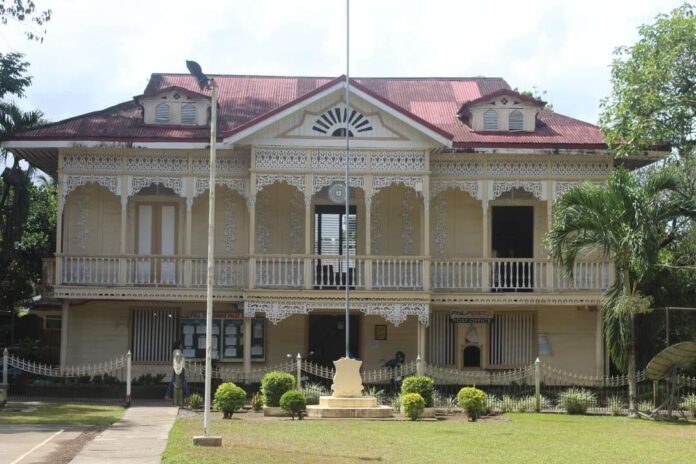It has been said that Libagon got its name from the word “libaong” a word in the dialect to mean a small depression in the ground. Spanish authorities mistook the reference to the ground fault on the land, being tilled by a peasant they met, as the name of the place. It has since been known by the name, Libagon.
A barrio of Sogod until 1884 when Domingo Espina was elected Municipal Captain and held office in Libagon as Sogod del Norte. This set up was carried on during the term of Don Nicolas Idjao who was appointed as Municipal Mayor by Gen. Bursett at the onset of the American rule. At this point, governance was under the American Military Government in Leyte. In 1904, Ladislao Decenteceo of Consolacion (then a barrio of Libagon) was elected Municipal Mayor and transferred the seat of government to Consolacion and made Libagon a barrio.
When Mariano Espina was elected councilor during the Decenteceo administration, he worked and succeeded in establishing Libagon as an independent town. Thus, on October 16, 1913, Libagon was declared an independent municipal government, with Mariano Espina as the first Municipal President.
Years thereafter saw the flourishing of the municipality of Libagon under the administration of almost a dozen local executives during the American regime until the Philippine Commonwealth ended in 1946 when the Philippines gained its independence from the United States of America.
The town of Libagon was not spared of devastation brought about by World War II. This worsened during the Japanese occupation in 1943-1944. Despite the experience, the people of Libagon showed their mettle and survived the war by actively involving and supporting the guerilla movement that eventually defeated the Japanese forces in the island of Leyte.
Thereafter, the town of Libagon continued to ink its place in the new Philippine Republic that grew out of the ruins of World War II. The people of Libagon stood proud of their sons who died, as well as, those who survived the Death March after the fall of Bataan. The victories and the freedom won by the local guerillas in their encounters with the Japanese forces in 1944, aptly referred to as the “Liberation Movement”, enlivened the life of the people of Libagon.
After July, 1946, local governance in Libagon exemplified by the election and administration of subsequent municipal mayors “normalized” the conduct of the town’s social, economic and political affairs. Moving on the political tempo of the national government, the municipality of Libagon is witness to the two-party Presidential system from the time of President Manuel Roxas to President Diosdado Macapagal, echoing the same political platforms and passively participating in a very centralized system of governance. Libagon, nevertheless, had been privileged to having been served by committed and dedicated public officials, among them: Mayor Francisco E. Espina, Mayor Mario Espina, Mayor Rito Monte de Ramos and Mayor Salvador Resma.
During the Martial Law rule of former President Ferdinand Marcos, Atty. Domingo P. Espina was appointed municipal mayor and was eventually elected during the 1980 elections. Later on though, in 1986, with the EDSA Revolution, the political changes in the national government affected the local government with local officials being replaced by new appointees.
The passing of Republic Act 7160, otherwise known as the Local Government Code of 1991, brought in pronounced changes in the administrative and political structures in the local government, with the devolution of authorities, human and financial resources from the central government. The expanded power authority devolved to the local government proved to be jolting, yet, challenging to the local government bureaucracy.
The Local Chief Executives who held the political reigns after the Edsa Revolution are the following: the late Mayor Rogato J. Paitan, former Mayor Domingo P. Espina, former Mayor Rizalina B. Espina and Ex-Mayor Oliver E. Ranque.
(Source: Municipality of Libagon, source forwarded by: Taga Libagon Facebook page)


